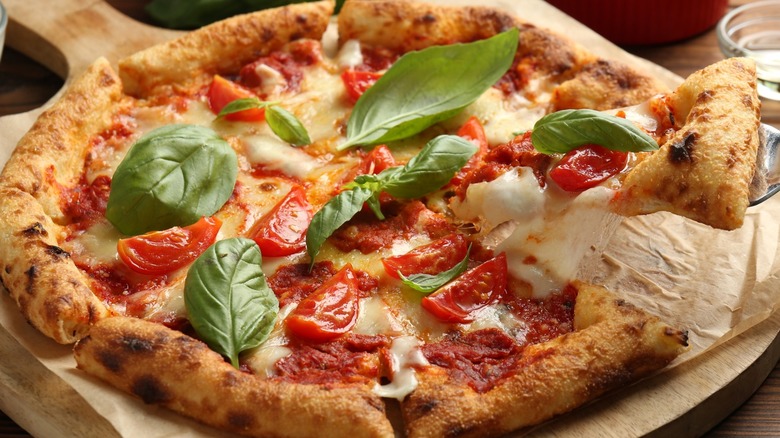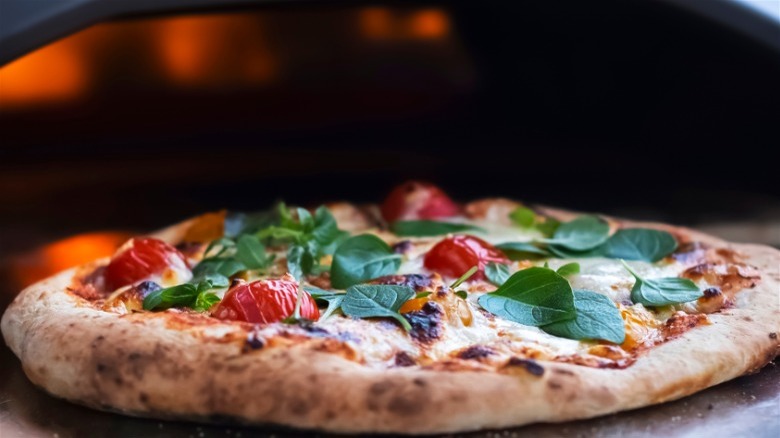2 Pro Tips For Making Homemade Pizza Taste Like It Came Out Of A Pizza Oven
Pizzerias come a dime a dozen, but what's separating the good from the great? Warm, savory pizzas are made by people who go the extra mile to get the best ingredients, timing, and preparation. But don't worry — you don't have to be a professional chef to achieve restaurant-level pizzas at home. After all, pizza was considered pedestrian in Italy before its international success.
Baking pizza crust can be tricky to figure out solo, so Chowhound found an expert to walk us through the process. "The best way to make a homemade pizza taste like it came out of a pizza oven is using the best dough you can make without sugars or additives," said Nicole Bean, owner of Pizaro's Pizza Napoletana in Houston, Texas. Her restaurant cooks Neapolitan, Detroit, and New York-style pizzas daily, so the folks at Pizaro's know how to work the dough to their will.
A common mistake people make with their pizza dough is overcomplicating it. All you need is fine 00 Italian flour, water, salt, and yeast. A little bit of olive oil can help crisp the crust, too. When it comes time to put your crust in the oven, Chef Bean said to bake your pizza at "the highest temperature your oven will allow you to go. Usually, for home ovens, you're going to be anywhere between 500 to 550 [degrees Fahrenheit]."
Heat and timing for a crispy pizza crust
If you think 500 degrees seems high for cooking pizzas, consider that Pizaro's blasts its Neapolitan pies at 900 degrees Fahrenheit for 90 seconds. A good dough can take the heat. The right time and temperature for home pizzas will depend on what kind of crust you want. For thin crust, the flash cooking method is tried and true. However, if you're going for a chewy, thick crust, then patience pays off; set the heat a bit lower and give it more time to make sure it's thoroughly cooked. Bean recommends "[u]sing a pizza stone and moving the rack up closer to the element." But not too close, otherwise, it might burn.
Pizza stones are made of materials (clay, cast iron, steel, or cordierite) designed to transfer heat evenly. Think about what you want in a pizza: a crust that's firm on the bottom that won't fall through and toppings that are cooked but not singed. The pizza stone directs more heat through the bottom of the crust, giving it the correct bottom-to-top doneness. This unconventional kitchen tool helps mimic a true wood-fired pizza oven, so it's no wonder Bean would recommend one.

